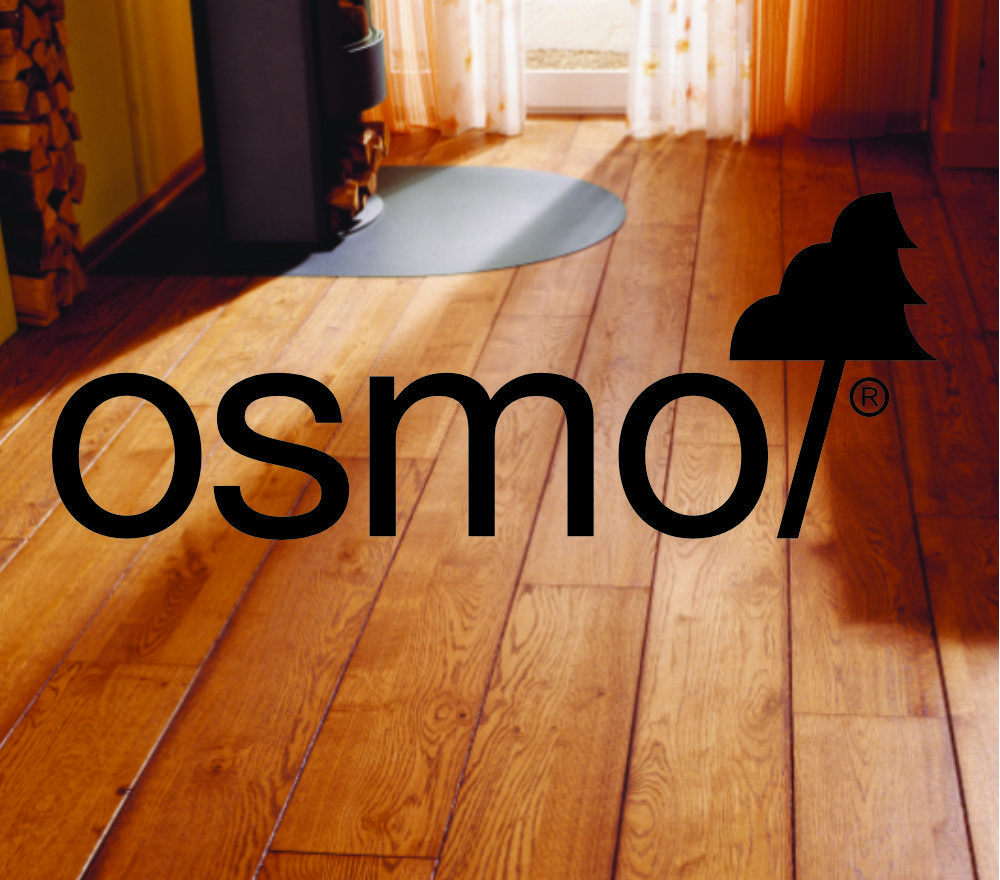Osmo Oil is one of our best selling wood finishes due to its unique durability and being made from natural ingredients. Because we now sell their full range we often get asked questions about what is the best Osmo oil to use and advice on their other products. Below is a full list of questions and answers.
What does Osmo oil do?
Osmo oils have been created for a wide variety of wood finishing in interior or exterior use. It feed and protects the wood whilst creating a barrier seal against every day use. There is a wide selection of different oils available for each individual job and you can see their full selection here.
Is Osmo oil a varnish?
Osmo is not a varnish, Their Polyx range is a Hard wax oil made from a blend of natural oils and waxes. Hard Wax Oil is more or less as hard a finish as a varnish but it is easier to apply and leaves a nicer finish. It is also a far easier finish to touch up and repair as you can simply re-apply the oil over the surface without having to remove previous finishes.
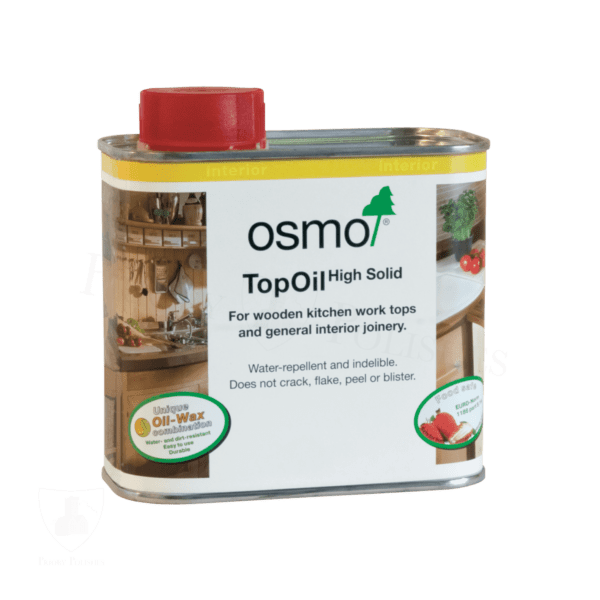
Which Osmo oil is best for worktops?
You can use two different products for a worktop. By far the best to use would be Osmo Top Oil as it comes in various shades and is available in a Satin, Matt or Natural sheen. They come in some unique coloured tints so you can create a bespoke shade and is easy to apply. Being made from natural plant oils and waxes, you are also not using harmful chemicals on your work surfaces. You can also use the Polyx oil tints but I personally would use the top oil.
Is Osmo oil food safe?
Both the Polyx Oil and Top Oil are food safe when fully dry. This is why it is the ideal wood finish coating in kitchens or areas where food preparation is carried out. Once fully cured the oil is also safe for humans, animals, plants and children’s toys.
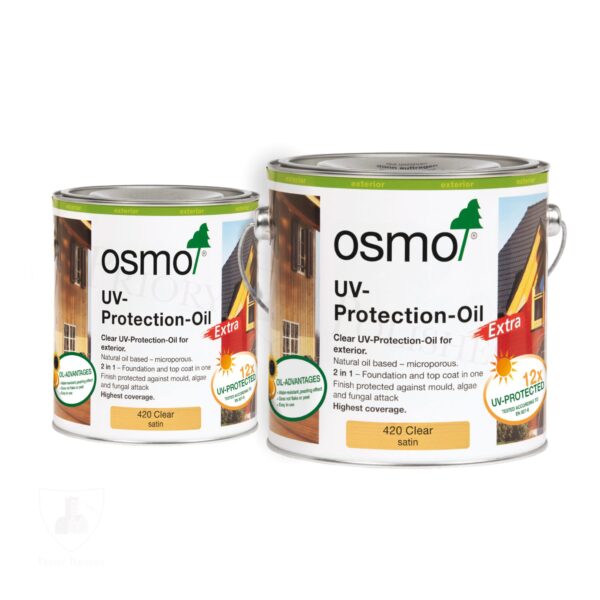
Can Osmo oil be used outside?
Not all Osmo oils can be used outside as some are for use on interior woods only. The best product for outside use would be their Uv-Protection oil extra or decking oil. The UV protection is especially for exterior woods as the micro-porous surface creates a water replant surface but this also allows the wood to breathe, therefore reduces swelling and shrinkage of the timber. This finish is designed not to crack, peel or flake and reduces the greying process on external timbers. It is easy to use as you can apply without sanding and is often used on external doors, windows, cladding and garden sheds.
The Decking Oil is made from a Teak Oil which is ideal for decking boards in both pine softwood and hardwoods like Oak. It protects from weather, moisture, cracking, splitting and warping so perfect as a maintenance product.
Which Osmo oil for cedar cladding?
Osmo Uv Protection can also be used for ingredient-rich wood species like Cedar, Iroko, Teak and Mahogany but you do need to leave the wood for around 12 weeks of weathering prior to application. It works well on Cedar cladding on vertical boards as there will be good water run-off.
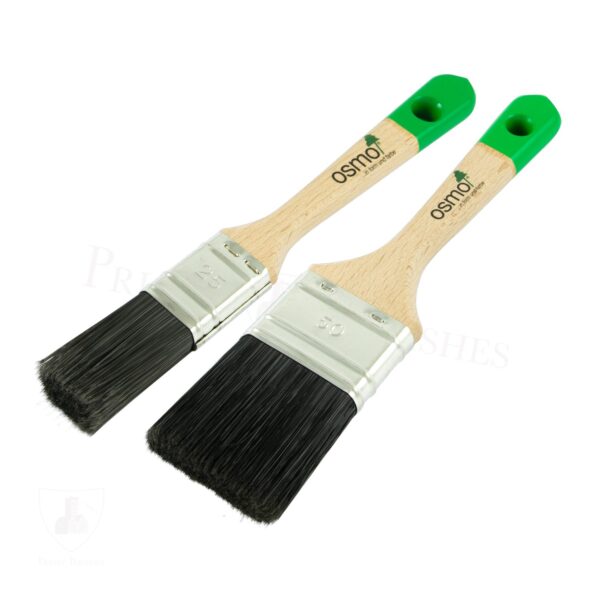
How apply Osmo oil
The best way to apply any Osmo oil is first apply a coat using a Flat brush as this will offer a good application. Once this coat is dry apply a second coat using with an Osmo easy pad as this will offer a smooth flat finish. We find this works on most surfaces, but is perfect for interior worktops and furniture.
Can you use Osmo oil over paint?
The simple answer is no. It is always best to apply directly onto bare natural wood as a painted surface would not allow the oil to absorb into the timber.
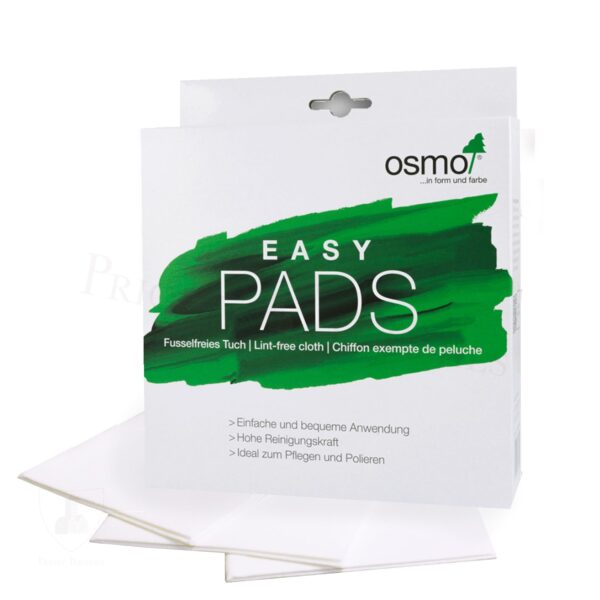
Can you apply osmo oil with a cloth?
Use the same advice as above. I like to use a lint free easy pad to apply the final application to create a lovely smooth finish.
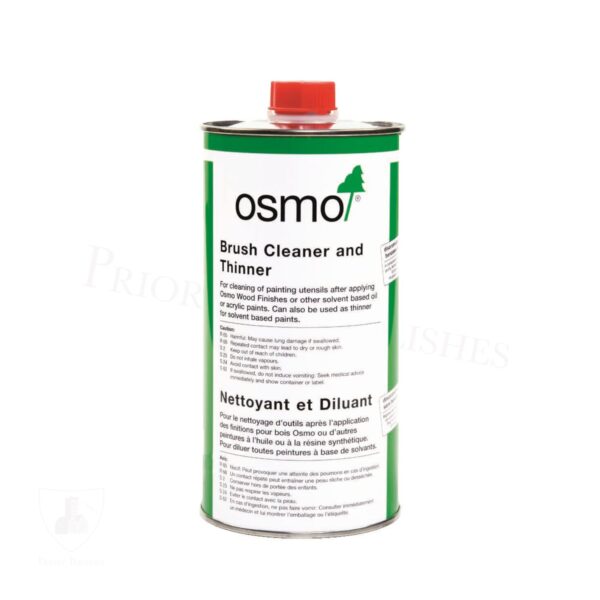
how to clean an Osmo oil brush
The best product to clean brushes or any equipment used when using oiling is Osmo Brush cleaner and thinner. It is simple and easy to use and cleans brushes with ease. It also has the added benefit of being low odour.
how can I remove Osmo oil?
As Oil soaks into the timber it can some times be difficult to remove but for the best solution, use the Brush cleaner and thinner and wipe over the surface to remove as much as possible. Once dry, you will have to sand the wood to remove the rest of the oil. The success will vary on this method as it depends on how far the oil has penetrated into the timber.
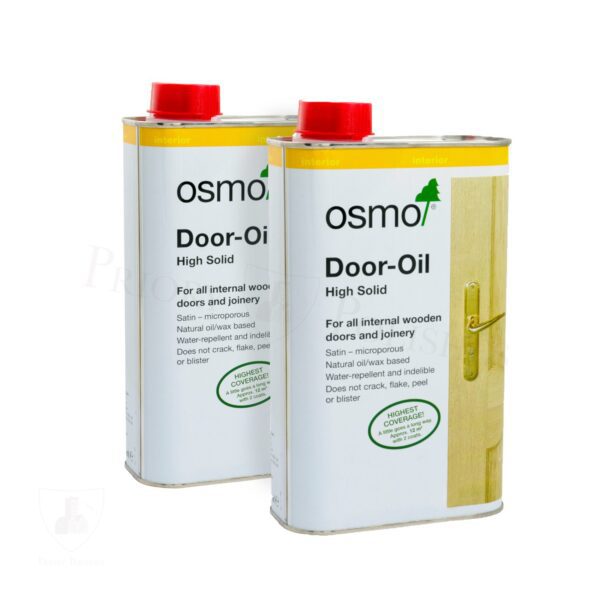
Which Osmo oil is best for Oak doors?
Osmo Door Oil perfect for use on all interior doors made of Oak and other hard woods. We offer a clear satin finish or a raw finish that does not change the colour of the wood. It has been made from natural oils and waxes including sunflower oil, soybean oil and thistle oil. This finish will offer dirt resistance, protects from moisture, liquids and will not crack, peel, flake or blister.
Can you use Osmo oil on oak veneer doors?
Lots of wood finishing manufacturers sell oils that are not suitable for veneered Oak doors as they have too many solvents in their ingredients. This is because Oak veneer is a very thin slice of wood that has been glued on. When the Oil is applied, the solvents can seep through the veneer and will soften the glue underneath. This will then lift the veneer overtime and ruin the door.
Osmo Door Oil is different to most other finishes as it has been made with a combination of oils and waxes but is low in solvent content, so this reduces the risk of damaging the veneer. It is still best to check with the manufacturer of the door and always apply the oil very thinly. Test a small section first to be on the cautious side, but this oil will work on most veneered doors.
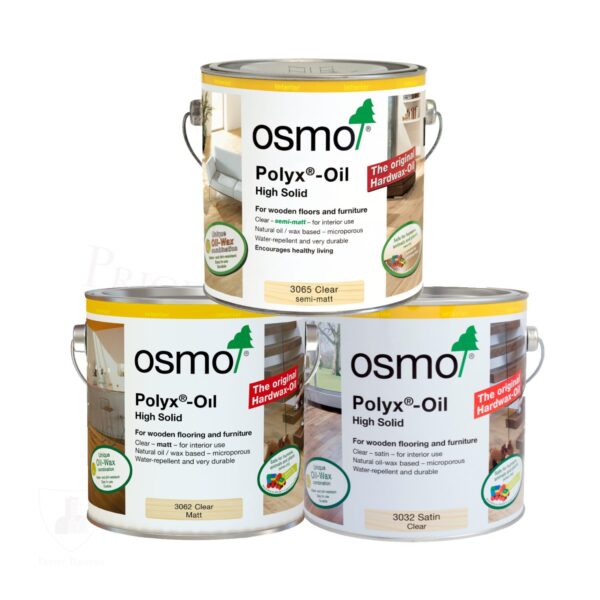
Which osmo oil is most suited for furniture?
You can use most of the range for furniture but the most popular is Polyx Oil Original Clear as you can create either a matt or gloss clear wood finish. If you want to add a shade to the timber, you can either stain before application or use Polyx Oil Tints to create some unique shades as they offer colours that include White, Light Grey, Honey, Amber, Terra or the darker Graphite. These can are also often used on Oak tables to create a modern look. Other options for your furniture would be to use a good quality wax finish as this will produce a more mellow sheen. The oil will be more of a protective finish but I personally prefer a wax on furniture.
How long does Osmo oil take to cure?
With most oils they will be touch dry after 24 hours but will not fully cure for around 14 days. During this time you just have to be very careful on the surfaces that have been oiled and try not to use them if possible.
Where is osmo oil made?
These oils are produced and manufactured in Germany. Osmo have over 140 years of dealing in wood finishes, so have the experience of creating a superb finish. This is why their products are so popular as they are made to such a high standard using natural ingredients.
Is Osmo oil heat resistant?
With most oils, there will be very slight heat resistance but as this is a natural finish, you still have to be very careful as heat can damage the finish and surface. Wood oil will offer a good barrier to protect against water, liquid stains, dirt and wear and tear. It will offer some heat resistance but just be careful not to put anything too hot on the surface.
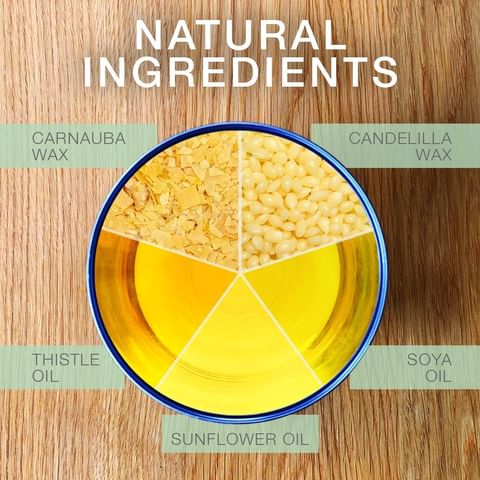
What is Osmo oil made from?
![]() Sunflower oil – A non-volatile oil pressed from the seeds of the sunflower.
Sunflower oil – A non-volatile oil pressed from the seeds of the sunflower.
![]() Soya oil – A vegetable oil extracted from the seeds of the soybean.
Soya oil – A vegetable oil extracted from the seeds of the soybean.
![]() Thistle oil – The seeds of the plant that are refined or cold pressed to produce thistle oil.
Thistle oil – The seeds of the plant that are refined or cold pressed to produce thistle oil.
![]() Carnauba wax – Carnauba, also called Brazil wax and palm wax, is a wax of the leaves of the carnauba palm
Carnauba wax – Carnauba, also called Brazil wax and palm wax, is a wax of the leaves of the carnauba palm
![]() Candelilla wax – Derived from the leaves of the small Candelilla shrub
Candelilla wax – Derived from the leaves of the small Candelilla shrub
Does Osmo oil smell?
Polyx Oil is ideal for interior use as it has been made from natural vegetable oils and waxes and so does not give off a bad smells when fully cured. It still is best to apply in a well ventilated area as there may be slight smells when applying due to the vapour.

Does Osmo oil darken wood?
Yes some of the Oils can darken the wood very slightly or they can also change the shade slightly of the bare timber. This will depend on how open the grain is and if it has been heavily sanded. If you are looking to try to keep the timber as close to the unfinished shade, then we would recommend to use Polyx Oil Effect Raw as this will make a nearly invisible surface finish. Top Oil 3068 Natural also offers this effect and protects wood nearly invisibly.
Does Osmo oil dry lighter?
When you apply the oil, it will always look darker than when dry. This is because you are wetting the wood when applying but it will dry to a lighter shade.
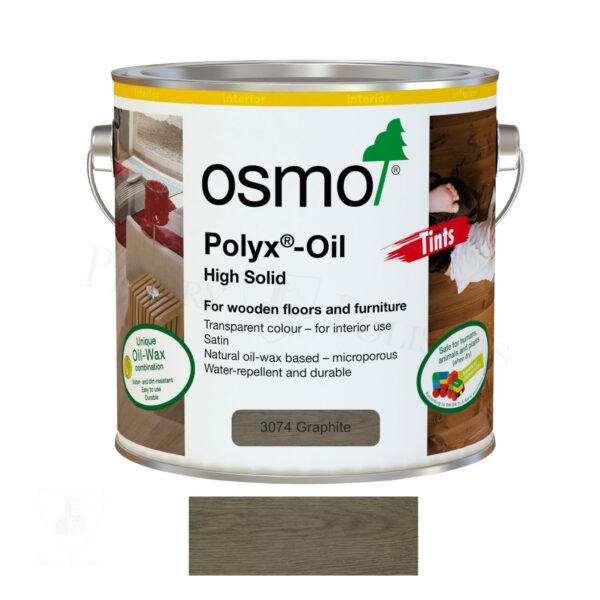
Which Osmo oil is best for an Oak staircase?
We would recommend any of the Polyx Oil range in the Original Clear, Tints or Raw as they all work perfectly on staircases. You can have a variety of shades, tones and finishes to suit and this will leave a hard wearing finish. To add a nice smooth feel on the stair rail, you can finish with a coat of wax when fully cured. The wax can then be used for maintenance in the future.
How long does Osmo oil last?
This will depend on how much wear and tear the surface gets and if you maintain the finish. With the Polyx oil, it is said the finish will last approximately 3 years without maintenance. Because this finish is easily maintained and can easily be touched up, it can last many more years (if not indefinitely if maintained on a regular basis).
UV Protection Oil will last a long time (Many years) if you follow the guidance on the tin. This will usually mean you need to re-coat the timber at least once every year for maintenance.
Is Osmo oil waterproof?
Osmo oils are not classed as waterproof but they are water resistant. This is because they are designed to create a micro-porous surface, helping the wood to breathe. This helps to stop wood from swelling and shrinkage if maintained correctly. This also helps with easy maintenance and re-application as you can apply on top of the existing oil.
How much Osmo oil do i need?
This will depend on what you are coating, if you are applying onto bare wood and what the timber is. On the tins and on our listings, there is some guidance on the amount each product will cover. As a rule, you need to apply at least two coats of oil on bare wood with a brush and then a coat with the easy pad. If you are only applying with an easy pad, 4-5 coats would be recommended.

Can you use Osmo oil on floors?
Yes the Polyx oil is ideal for application on floors. This can be in the clear or in the tints range. It will work for the protection of all wood floors, including cork flooring and will create a hard wearing finish that can handle a lot of foot traffic. It is also easy to re-apply in the future and easy to touch up small areas that get worn over time.
Osmo Oil Videos
Here are a selection of useful videos on how to apply and where to use these amazing wood oils.

